Information, Selected Works, Links,
Owe Deed, One Deep
September 30–November 14, 2020

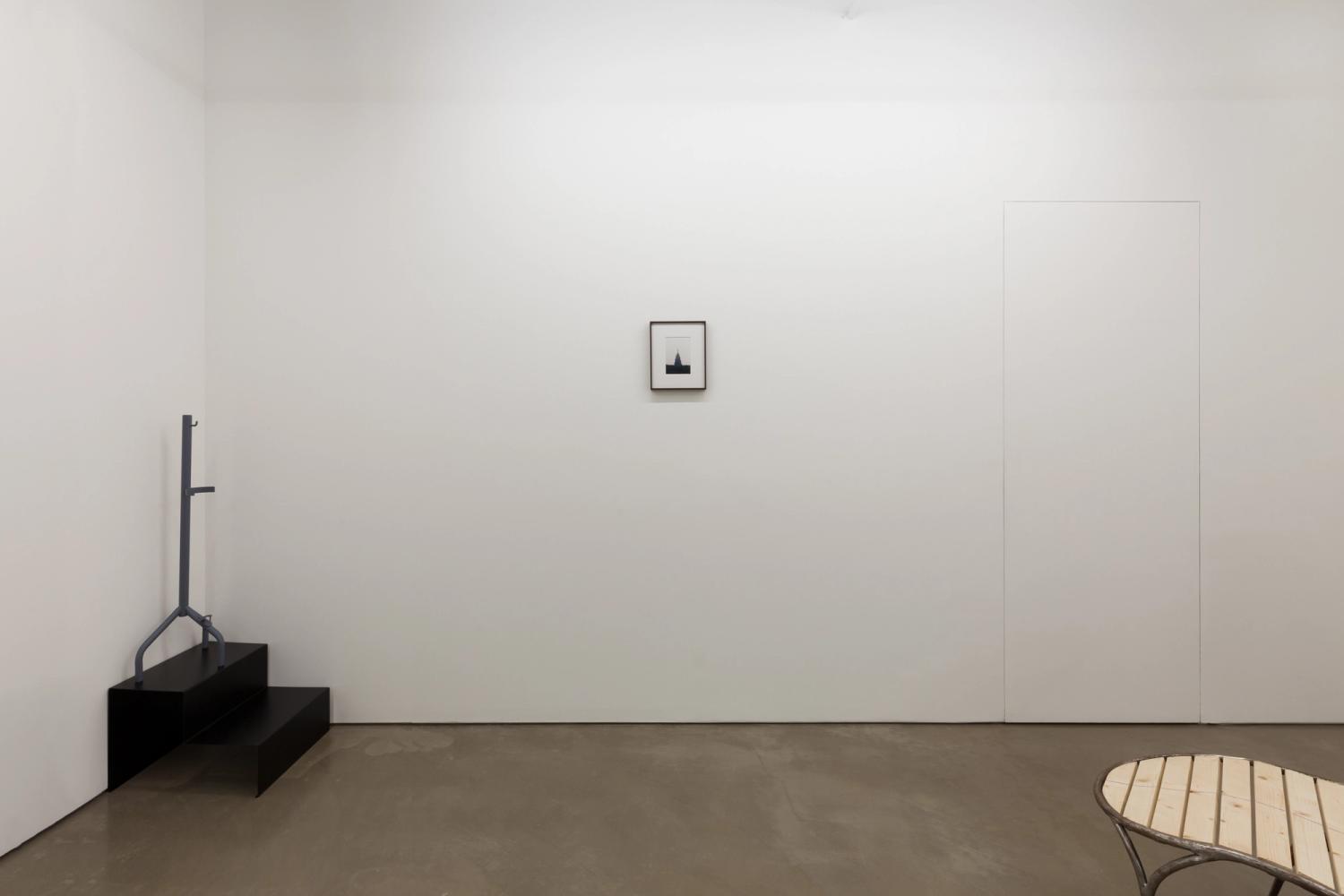
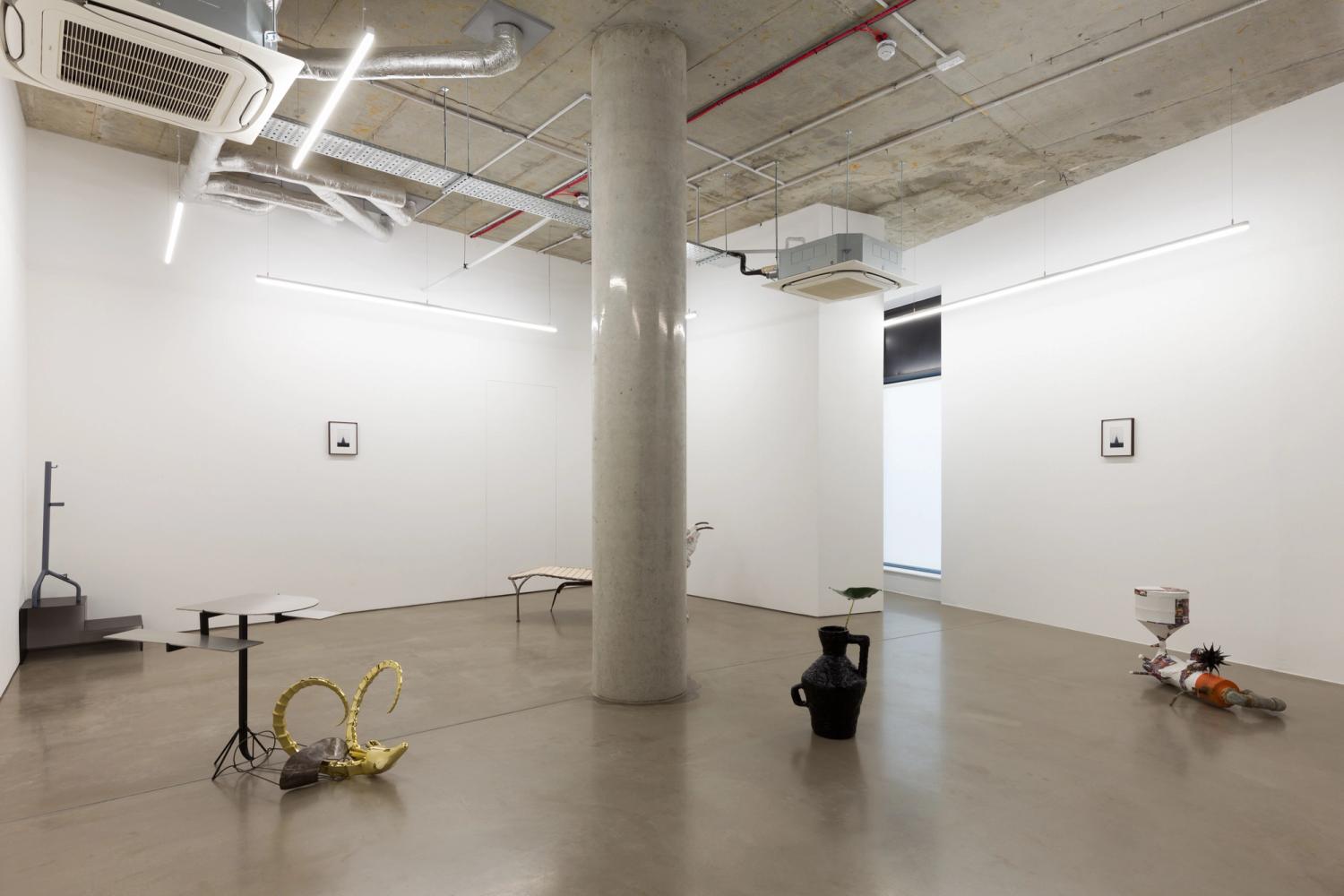
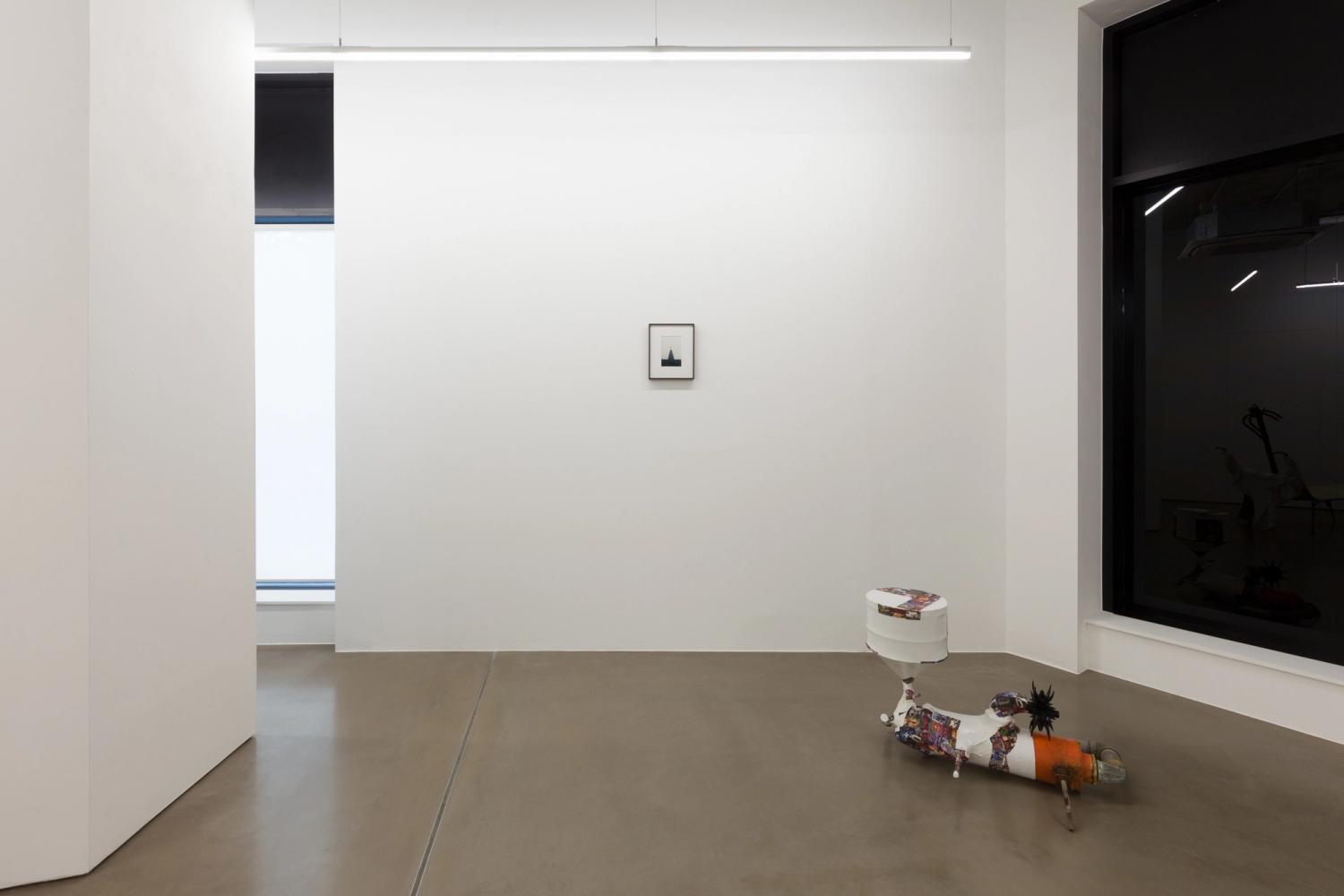
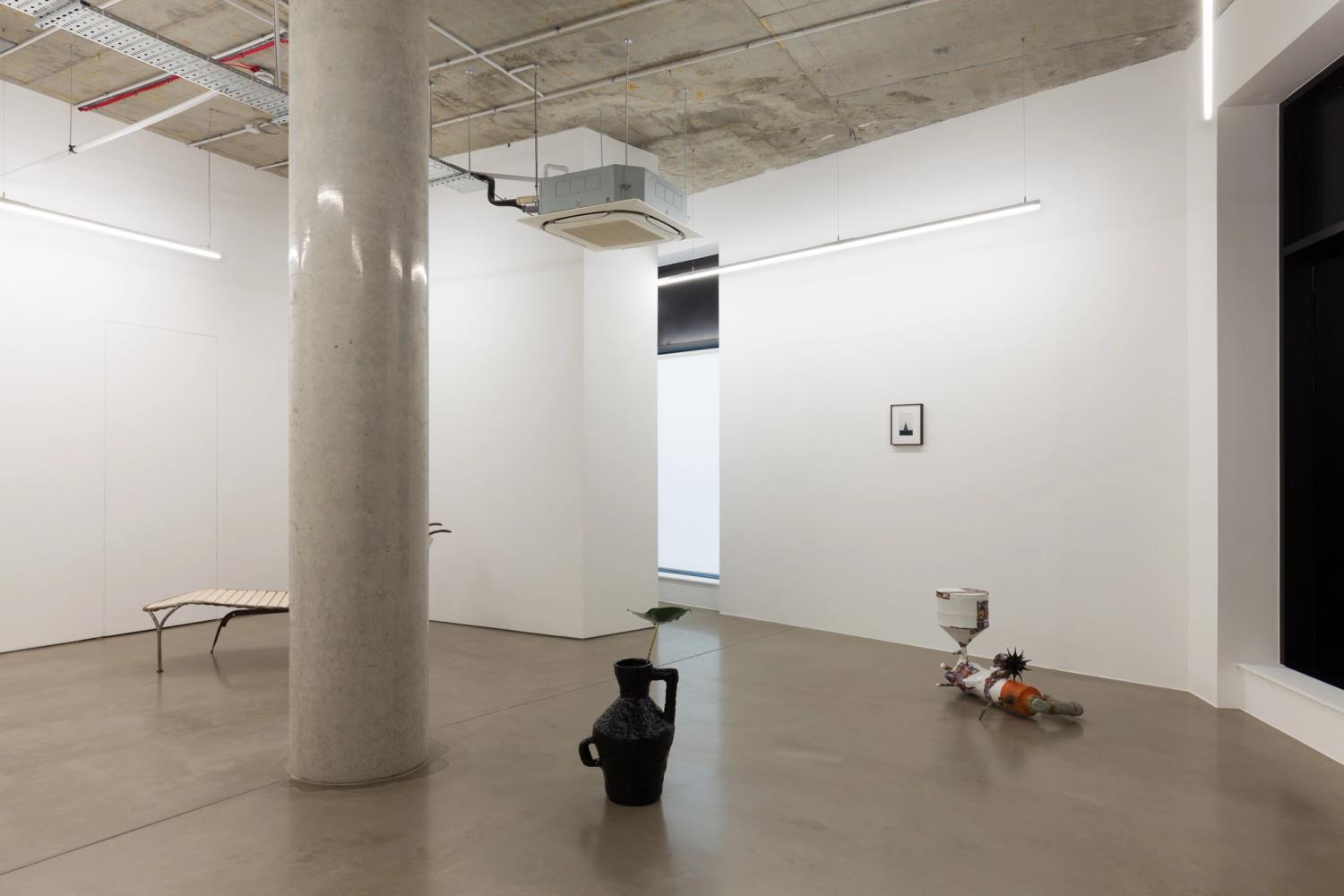


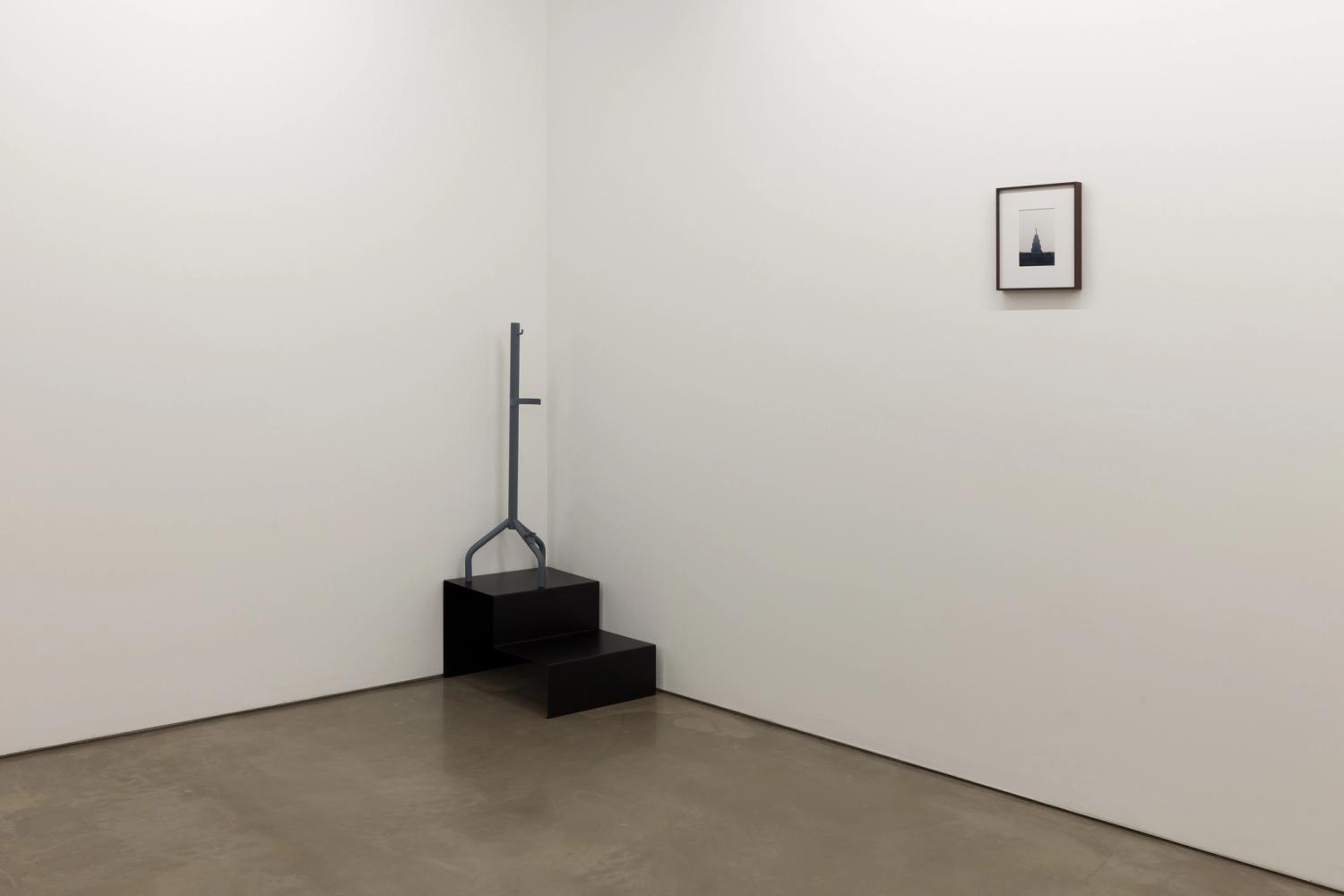
Press Release:
How might one understand mourning, when the event has yet to end? When the injuries not only perdure, but are inflicted anew? Can one mourn for those lost without assuming and usurping the place of the dead, and yet recognize that current injuries tether one to this past? Can one fashion an emancipatory vision not premised on recovery? Can one mourn what has yet ceased happening? And to what “end” are these questions invoked? 1
In “Owe Deed, One Deep”, Dozie Kanu presents five new sculptures, all completed this year, which stage the seemingly remote anteriority of the past and the disfigured promises of the present, to an inapproachable, ambiguous future. In merrill-y, the head of the Egyptian god Amon is buffed to shiny gold and attached to a mannequin torso. It lays below an elevated metal arm and torso rester. 0’s and 1’s consists of a vessel tarred black and glossed, holding a single leaf, which will wilt over the duration of exhibition. Composed of a bottle cap opener inscribed with the words “self serve”, in St. Jaded Extinguish, it is attached to a fire extinguisher holder on top of a two-step black metal podium. Healthy Minds Must Grow, Watch From The Bleachers, a day bed frame is reupholstered with pine slots, as in a deck chair, a purple line drawn in the middle. The curved top appearing as horns are adorned by a white hoodie with embroidered hibiscus. One of the day bed’s legs is interchanged as a prosthetic of a rusted plow. hemorrhaged and made deaf consists of plumbing resembling the internal organs of a human. Elements are shrink-wrapped and collaged with images of album covers by 2-DEF, Black Dave, Ghetto Twinz, Big Pokey, and others. A single photograph, Emo State, is repeated twice on the walls of the gallery. Taken by the artist, it shows in blurred distance the Akachi Tower located in Owerri, Nigeria before it was torn down. Constructed to mimic the biblical Tower of Babel with a measurement of over 40 feet, it was built on reclaimed waste land as a commercial and tourist site.
The sculptures and photographs together are embedded in present in all the complexities, fears, hopes and anxieties of its emergence: how did “we” get to this point in contemporary history? It’s fore-bearers lie as far back as the Atlantic slave trade and the uneven continental development over the centuries, and to more contemporary history of economic and environmental loops which have become the norm. “Owe Deed, One Deep” cites the long partnership between empire, capitalism and modernism, the development of private property and its relationship to the prison industrial complex, and the 2008 housing market crash precipitated by the collapse of the brokerage firm Merrill Lynch. While in previous exhibitions the artist displays his background in industrial and scenic design, creating works which cross the functional and the aesthetic, this is not the primary concern here. Design and the artist’s attention to display are a means to enter and engage in the exhibition. Its most pressing question is the one which begins this text: Can one mourn what has yet ceased happening? Mourning is both an expression of loss that tethers one to the dead, calling on the ownership and debt to the dead, and (assumes to) overcome loss by assuming the place of the dead. Melancholia is its alleged opposite, when the bereaved attempts to understand this space of death by placing oneself in the position of the captive, and loss is attenuated rather than addressed. 2 Melancholia insists that mourning and the past are not yet complete. Kanu’s sculptures are an inescapable confrontation with the dichotomy between mourning and melancholia, which historical markers continue to scar on real human bodies in the present and undermine the future. It is not merely a filter one adopts but the materiality of one’s bodies, an ever present, ever aware and contradictory violation, and an inapproachable, ambiguous future which is the will to be free.
1 Saidiya Hartman, “The Time of Slavery”, The South Atlantic Quarterly 101:4 (Fall 2012).
2 Sigmund Freud, “Mourning and Melancholia”, Trans. James Strachey, Collected Papers, V. 4 (1917/1957) 152 - 170.